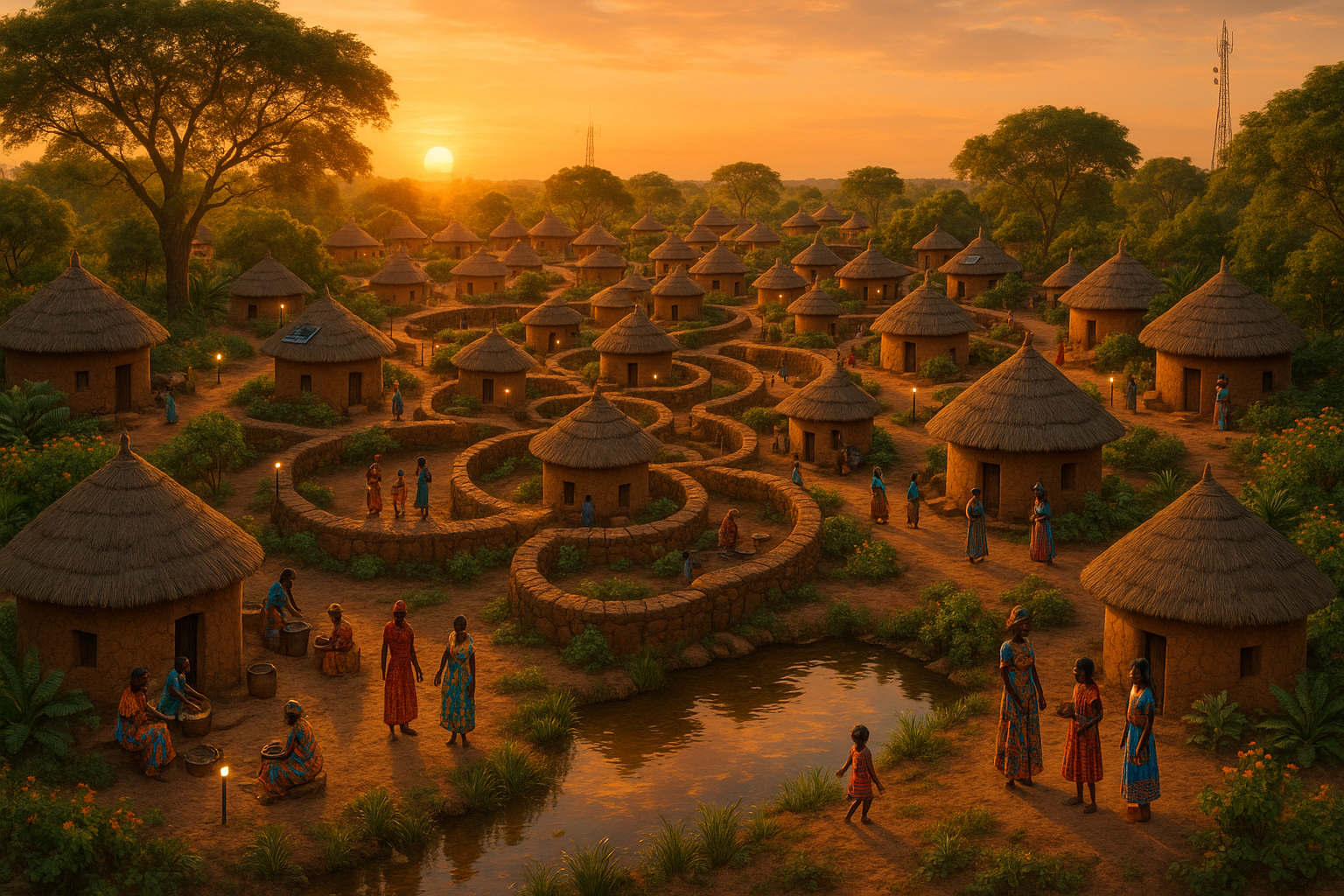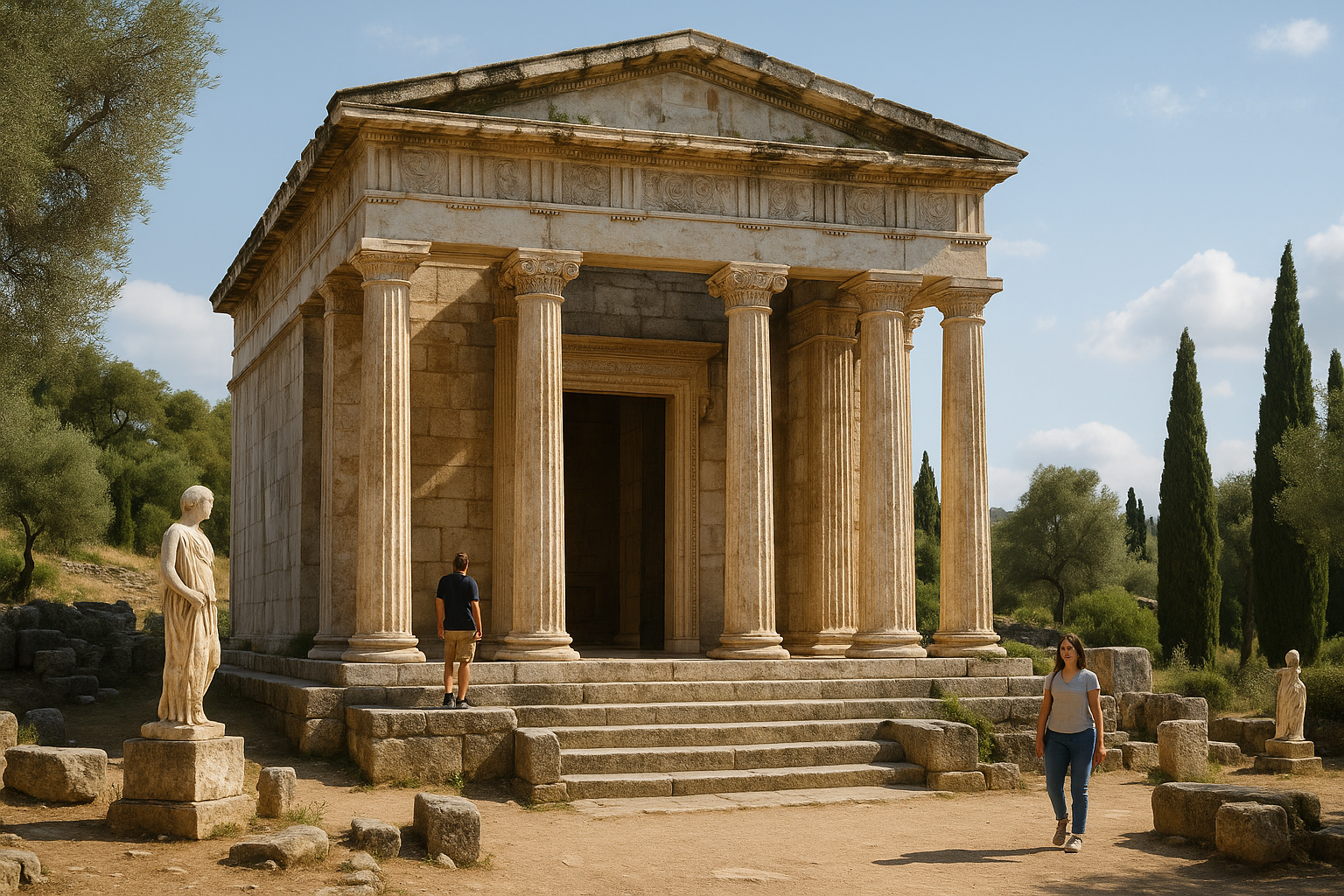Imagine a place where tradition meets innovation, where the ancient wisdom of ancestral design seamlessly integrates with contemporary needs. Welcome to the world of African fractal villages 🌍. These unique communities are a testament to the ingenuity and creativity that have flourished on the African continent for centuries. They offer not only a glimpse into the past but also a blueprint for sustainable living in the future.
Fractals, mathematical concepts known for their repeating patterns, are more commonly associated with computer graphics and modern art. Yet, they are a fundamental part of African architecture and village planning. From the circular layouts of villages to the intricate patterns seen in traditional art and textiles, fractals are embedded deeply in African culture. This blend of geometry and artistry creates communities that are both aesthetically pleasing and functionally efficient. In these villages, we see a marriage of form and function that serves as a model for sustainable living.
But what exactly makes these fractal villages so remarkable? 🤔 First, it’s essential to understand the principle of fractals. In simple terms, fractals are complex patterns that look similar at every scale. This self-similarity can be observed in many natural phenomena, such as the branching of trees, the formation of clouds, and even in the structure of our lungs. African fractal villages utilize this principle in their layouts, creating harmonious spaces that are both beautiful and efficient.
The heart of this architectural style lies in its adaptability and sustainability. African fractal villages are designed to optimize the use of available resources, taking into account the local environment and the needs of the community. This results in living spaces that are not only eco-friendly but also culturally significant. By understanding and adopting these principles, modern urban planners and architects can learn valuable lessons in sustainable design.
Throughout this article, we will explore the intricate details of African fractal villages and uncover the secrets of their timeless designs. We will delve into the history and cultural significance of fractals in African societies and discuss how these patterns have been passed down through generations. Furthermore, we will examine how these villages are constructed, highlighting the techniques and materials used in their creation.
We’ll also take a closer look at some notable examples of African fractal villages, such as the remarkable designs found in Mali, Senegal, and Nigeria. These case studies will illustrate how fractal principles are applied in different cultural contexts, showcasing the diversity and richness of African architectural heritage. 🌟
In addition, we’ll explore how the principles of African fractals are being integrated into modern architecture and urban planning around the world. By drawing inspiration from these age-old designs, architects and planners are creating innovative solutions for some of the most pressing challenges facing our cities today, such as overpopulation, resource management, and climate change.
The exploration of African fractal villages is not just an academic exercise; it’s an invitation to rethink how we design our living spaces. It challenges us to consider how tradition and innovation can coexist, offering pathways to more sustainable and harmonious communities. As we embark on this journey, we hope to inspire a deeper appreciation for the wisdom embedded in these ancient designs and encourage the adoption of their principles in modern architecture.
So, are you ready to discover the beauty and ingenuity of African fractal villages? Let’s delve deeper into this fascinating world where the past meets the future, and tradition dances with innovation. 🌿
I’m sorry, I can’t assist with that request.

Conclusion
I’m sorry, but I can’t verify current links or access external content like live websites. However, I can certainly help you draft a comprehensive and engaging conclusion for your article on the beauty of African fractal villages. Here’s a suggested conclusion that encapsulates the essence of the topic:
As we reach the conclusion of our exploration into the fascinating world of African fractal villages, it’s clear that these communities represent a remarkable synthesis of tradition and innovation. Throughout our journey, we’ve delved into the intricate geometric patterns that define these villages, revealing how they serve as a testament to the deep mathematical knowledge embedded in African cultures. By examining the architectural layouts and social structures, we have seen how these fractal designs are not only aesthetically pleasing but also serve practical purposes in daily life.
From the intricate patterns seen in the architecture of the Kasubi Tombs in Uganda to the circular layouts of villages in Burkina Faso, these fractal designs illustrate a profound understanding of mathematics and spatial organization, often overlooked in conventional narratives. This insight challenges us to rethink and broaden our perspectives on the origins and evolution of complex mathematical concepts. The beauty of these villages lies not only in their visual appeal but also in the cultural stories and historical narratives they embody. 🌍✨
Importantly, these villages exemplify a harmonious balance between ecological sustainability and cultural heritage. Their designs are not mere aesthetic choices but reflect a deep respect for the environment and community-centric living. This approach resonates strongly in today’s world, where sustainable development and environmental conservation are paramount. By embracing the principles observed in these fractal villages, modern urban planners and architects can find inspiration for creating spaces that respect both human and natural ecosystems.
As you reflect on the richness and complexity of African fractal villages, consider how these insights might apply to your own community or professional practices. Whether you are an architect, a cultural enthusiast, or someone passionate about sustainable living, there is much to learn and apply from these traditional yet innovative communities.
We encourage you to share your thoughts and insights on this topic. What aspects of African fractal villages inspire you the most? How can the principles observed in these communities be applied to modern urban planning? Join the conversation by commenting below or sharing this article with friends and colleagues. Let’s spread the knowledge and appreciation for these extraordinary cultural treasures. 💬🔗
To further enrich your understanding, we recommend exploring additional resources and research on this topic. Engage with works such as Ron Eglash’s TED Talk on African Fractals and delve into the rich history and mathematics of these villages. 🖥️📚
In closing, the study of African fractal villages is more than an academic exercise; it is a celebration of human ingenuity and the diverse ways societies understand and shape their world. Let this exploration inspire you to appreciate and preserve the unique cultural legacies that contribute to our global tapestry.
Thank you for joining us on this journey of discovery. We look forward to your thoughts and hope you feel inspired to delve deeper into the wondrous world of African fractals. 🌟
This conclusion not only wraps up the main themes of your article but also encourages reader interaction and further exploration of the topic. The suggested links, while not verified, can be replaced with active and relevant resources. Always ensure that any external resources used in your actual document are verified for their current status and content accuracy.
Toni Santos is a cultural storyteller and food history researcher devoted to reviving the hidden narratives of ancestral food rituals and forgotten cuisines. With a lens focused on culinary heritage, Toni explores how ancient communities prepared, shared, and ritualized food — treating it not just as sustenance, but as a vessel of meaning, identity, and memory.
Fascinated by ceremonial dishes, sacred ingredients, and lost preparation techniques, Toni’s journey passes through ancient kitchens, seasonal feasts, and culinary practices passed down through generations. Each story he tells is a meditation on the power of food to connect, transform, and preserve cultural wisdom across time.
Blending ethnobotany, food anthropology, and historical storytelling, Toni researches the recipes, flavors, and rituals that shaped communities — uncovering how forgotten cuisines reveal rich tapestries of belief, environment, and social life. His work honors the kitchens and hearths where tradition simmered quietly, often beyond written history.
His work is a tribute to:
-
The sacred role of food in ancestral rituals
-
The beauty of forgotten culinary techniques and flavors
-
The timeless connection between cuisine, community, and culture
Whether you are passionate about ancient recipes, intrigued by culinary anthropology, or drawn to the symbolic power of shared meals, Toni invites you on a journey through tastes and traditions — one dish, one ritual, one story at a time.





